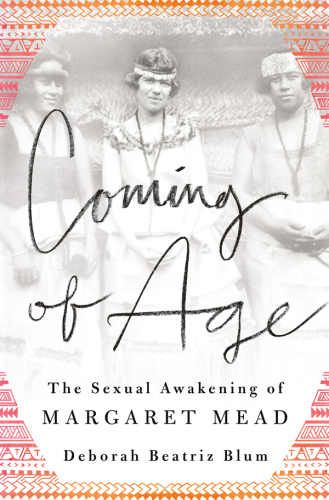
Coming of Age
The Sexual Awakening of Margaret Mead
کتاب های مرتبط
- اطلاعات
- نقد و بررسی
- دیدگاه کاربران
نقد و بررسی

April 10, 2017
Blum (Bad Karma) gives a novelistic retelling of the major events and relationships preceding and including anthropologist Margaret Mead’s 1925 trip to Samoa, using letters to reconstruct scenes and dialogue among Mead’s family, friends, and three early loves: Luther Cressman, her first husband; Ruth Benedict, her mentor; and famous linguist Edward Sapir. While points of view alternate among these four leads, Mead is the central character, and she comes across as impetuous, determined, intense, high-strung, ambitious, and very vain. Period detail about travel, clothing, illness, and the budding fields of anthropology and psychology bring the story to life, making Mead’s notions of women’s independence stand out against the conventions of the time. After Mead’s passionate meeting with her future lover, Reo Fortune, the story fizzles to an uncertain end, leaving it unclear what these early experiences contributed to Mead’s later life and work. The most engaging character is the revered but aging Franz Boas, head of anthropology at Columbia, who gives Mead her topic of study. Blum’s vivid and personal reimagining is an entertaining addition to the constellation of work on this important figure, giving insight into the vulnerable girl’s heart behind the groundbreaking work. Agent: Harvey Klinger, Harvey Klinger Agency.

June 1, 2017
Blum (Bad Karma: A True Story of Obsession and Murder, 1986) reconstructs the five-year period of Margaret Mead's life leading up to and including her transformative trip to Samoa in 1925.Throughout her long and respected career, Mead was seldom a stranger to controversy, either in her progressive views about sex and relationships or in her approach to research. Her provocative reputation was further bolstered by her memoir, Blackberry Winter (1972). Since her death in 1978, she has been the subject of several biographies as well as Lily King's acclaimed novel Euphoria (2014), which explores the sexual tensions that arise between a group of anthropologists on a tribal expedition; the characters are loosely based on Mead, her second husband, Reo Fortune, and future husband, Gregory Bateson. Sexual tensions are also at the heart of this latest biographical exercise, and Blum provides a structure more akin to fiction. Drawing from letters, diaries, and memoirs, she weaves a dramatic tale around the intimate relations of the individuals who were central to launching Mead's career. The key players were Mead's instructor at Columbia, Dr. Ruth Benedict, linguist Edward Sapir, her first husband, Luther Cressman, and, in later chapters, fellow anthropologist Fortune. Though the author tracks Mead's career pursuits, they remain peripheral to the emotional drama as the heated love triangle among Sapir, Benedict, and Mead takes center stage. Cressman was also along for the journey, as their marriage was continually in jeopardy and finally collapsed under the strain of Mead's attraction to Fortune. Though the narrative is a frequently absorbing, occasionally breathless page-turner, the individuals are narrowly portrayed through the span of their infatuations and come across as flat. The brilliant writer and thinker that Mead would become is hardly evidenced by the self-absorbed, love-obsessed woman depicted here. A minor effort for readers interested in learning more about Mead's early life.
COPYRIGHT(2017) Kirkus Reviews, ALL RIGHTS RESERVED.

Starred review from June 1, 2017
When one thinks of academic and cultural anthropologist Margaret Mead (1901-78), the phrase "sexual awakening" may not be the first thing that comes to mind--at least not as it concerns Mead herself. Yet, Blum's (Bad Karma) dive into Mead's personal letters, diaries, and memoirs offers untapped insight into a woman whose ideas helped pioneer the 1960s sexual revolution. Mead also experienced turmoil, ecstasy, extramarital affairs, and same-sex relationships in an age when society assigned women gender roles that expected them to conform quietly. Blum focuses on five pivotal years in Mead's life, beginning with 1921, when the activist first began to question societal constraints on Western women. Mead wrote frankly about the Samoan culture she studied, and this biography gives us something equally rich: knowledge of her colorful, defiant, and courageous life--one of nonconformity, gender-bending, and paving new paths. VERDICT Through Blum's narrative, Mead becomes more than a quotable female pioneer and transforms into a three-dimensional woman.--Erin Entrada Kelly, Philadelphia
Copyright 2017 Library Journal, LLC Used with permission.

























دیدگاه کاربران